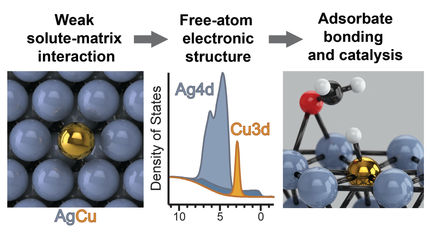Unmasking DNA
DNA used as a template for nanolithography
Advertisement
DNA is one of the most popular building blocks of nanotechnology and is commonly used to construct ordered nanoscale structures with controlled architectures. For the most part, DNA is looked upon as a promising building block for fabricating microelectronic circuits from the bottom up. Now a team of researchers at Young propose the marriage of DNA self-assembly with standard microfabrication and lithography tools to form features such as nanochannels, nanowires, and nanoscale trenches. This discovery may open up new avenues for nanofabrication at dimensions not accessible by conventional optical lithography.
Adam Woolley and Héctor Becerril have developed a method to use DNA molecules as templates to define patterns on substrates. The researchers deposit metal films over DNA molecules aligned on a substrate. The DNA molecules essentially act as nanostencils to define sub-10-nm-sized patterns on the substrate. The researchers call this process "DNA shadow nanolithography" because the metal film is deposited at an angle and the shadow cast by the DNA molecules defines the dimensions of the features on the substrate.
Anisotropic etching of the patterned surfaces using reactive gas plasmas, a commonly used fabrication tool in the semiconductor industry, yields high-aspect-ratio trenches on the substrate. The trenches can be sealed at the top to form continuous enclosed nanochannels. Alternatively, the trenches can be chemically functionalized and used as templates for the deposition of metal nanowires such as those of nickel, copper, or silver. The templated trenches and nanowires have lateral dimensions less than 30 nm and can be tailored to be less than 10 nm. The exact dimensions of the trenches can be varied by tuning the angle of deposition and the thickness of the deposited film.
The researchers believe that it should be possible to transfer complex patterns onto substrates using surface-aligned DNA molecules. "One remarkable aspect of this technology is that it utilizes the patterning ability of DNA without requiring the nucleic acid to remain in the final construct", said Woolley, adding that the nanostructures fabricated by DNA shadow nanolithography may find use as nanofluidic channels and chemical sensors.
Original publication: Adam T. Woolley et al.; "DNA Shadow Nanolithography"; Small 2007, 3, No. 9, 1534-1538.
Other news from the department science
These products might interest you
Most read news
More news from our other portals
See the theme worlds for related content
Topic world Sensor technology
Sensor technology has revolutionized the chemical industry by providing accurate, timely and reliable data across a wide range of processes. From monitoring critical parameters in production lines to early detection of potential malfunctions or hazards, sensors are the silent sentinels that ensure quality, efficiency and safety.

Topic world Sensor technology
Sensor technology has revolutionized the chemical industry by providing accurate, timely and reliable data across a wide range of processes. From monitoring critical parameters in production lines to early detection of potential malfunctions or hazards, sensors are the silent sentinels that ensure quality, efficiency and safety.






























































